Yesterday I showed you a short walk through the center of my hometown. Today I will continue the story and show you a little more than last time. But we will continue where we started, from the Palace Square. The building of the Main Admiralty is adjacent to this square. This time we didn't get to it, but it got into the frame.
This building was founded in 1704 and was designed as a shipyard. A year later, the first ships were laid down on the slipways.
The building acquired its present appearance in 1806. The architect Andreyan Zakharov proposed his own project, according to which the old building, erected in 1732-1738 by the architect IK Korobov, was redesigned.
Without going into historical details (and there are a lot of such details), I will note that I spent many years in this building. Initially, I studied here at the V.I. F.E, Dzerzhinsky (now this school is reduced) and received his first profession. Then, after several years of service in the Navy, he served here as a teacher and then a psychologist.
So, I will tell you one secret that concerns urban planning. Strictly under the spire of the Admiralty there is a small room without windows or doors. It is impossible to enter there. If only to make a break in the wall ... In the middle of the room there is a small pedestal with a copper board on it. There is a mark on the board, which is considered the geometric center of the city of St. Petersburg. If you look at the plan of the historic center of the city, you will see that from the spire of the Admiralty, the streets radiate out in beams in all directions. They are concentrated in this very center.
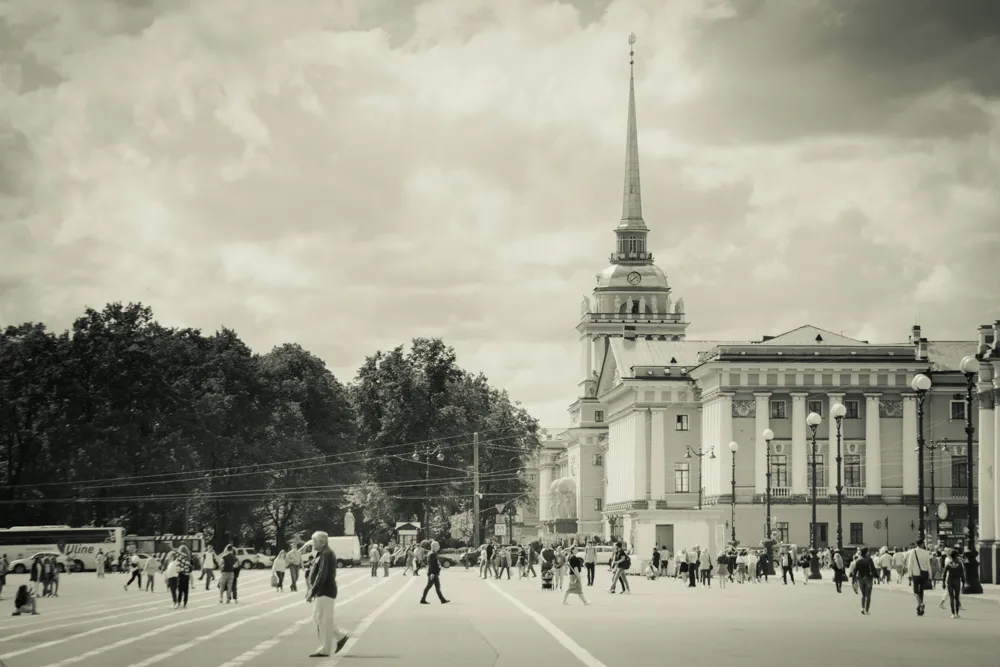
Вчера я показал вам небольшую прогулку по центру родного города. Сегодня я продолжу рассказ и покажу вам несколько больше, чем в прошлый раз. Но продолжим мы там, откуда и начинали, с Дворцовой площади. К этой площади примыкает здание Главного Адмиралтейства. На этот раз мы до него не дошли, но в кадр оно попало.
Это здание было заложено в 1704 году и проектировалось как верфь. Через год на эллингах были заложены первые корабли.
Современный вид здание приобрело в 1806 году. Архитектор Андреян Захаров предложил свой проект, по которому был переделано старое здание, возведённое в 1732—1738 годах архитектором И. К. Коробовым.
Не вдаваясь в исторические подробности (а таких подробностей очень много), отмечу, что в этом здании я провёл немало лет. Вначале я учился здесь в военно-морском инженерном училище им. Ф.Э, Дзержинского (сейчас это училище сокращено) и получал свою первую профессию. Затем, после нескольких лет службы в ВМФ, служил здесь в качестве преподавателя, а затем психолога.
Так вот, открою вам один секрет, который касается градостроения. Строго под шпилём Адмиралтейства есть маленькое помещение без окон и дверей. туда невозможно войти. Если только сделать пролом в стене... Посередине комнаты есть небольшой постамент и на нём медная доска. На доске есть метка, которая считается геометрическим центром города Санкт-Петербург. Если вы посмотрите на план исторического центра города, то увидите, что от шпиля адмиралтейства улицы расходятся лучами во все стороны. Они сосредоточены именно в этом центре.
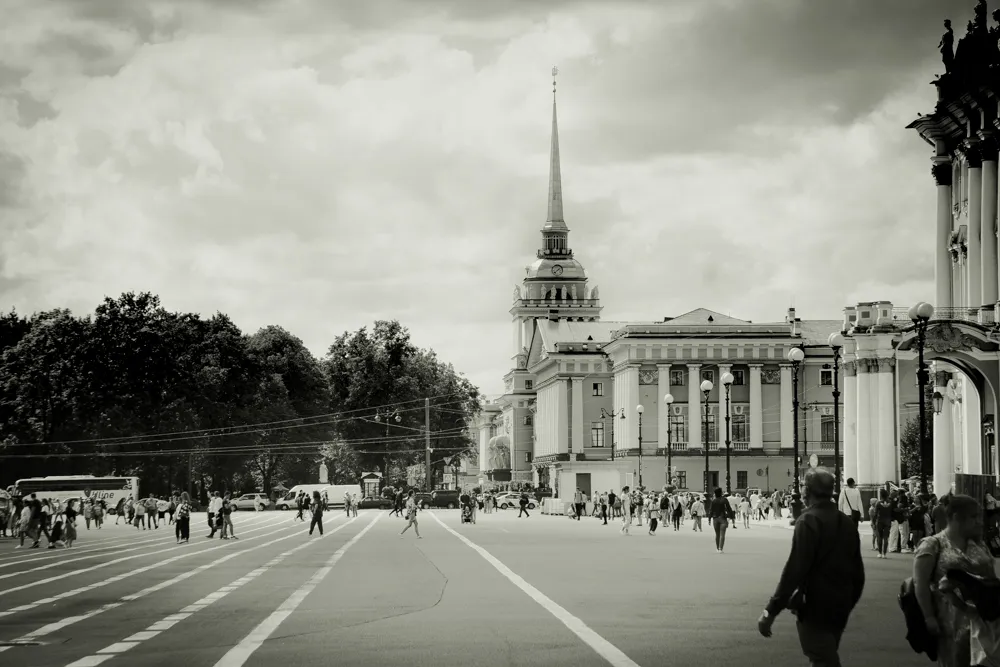
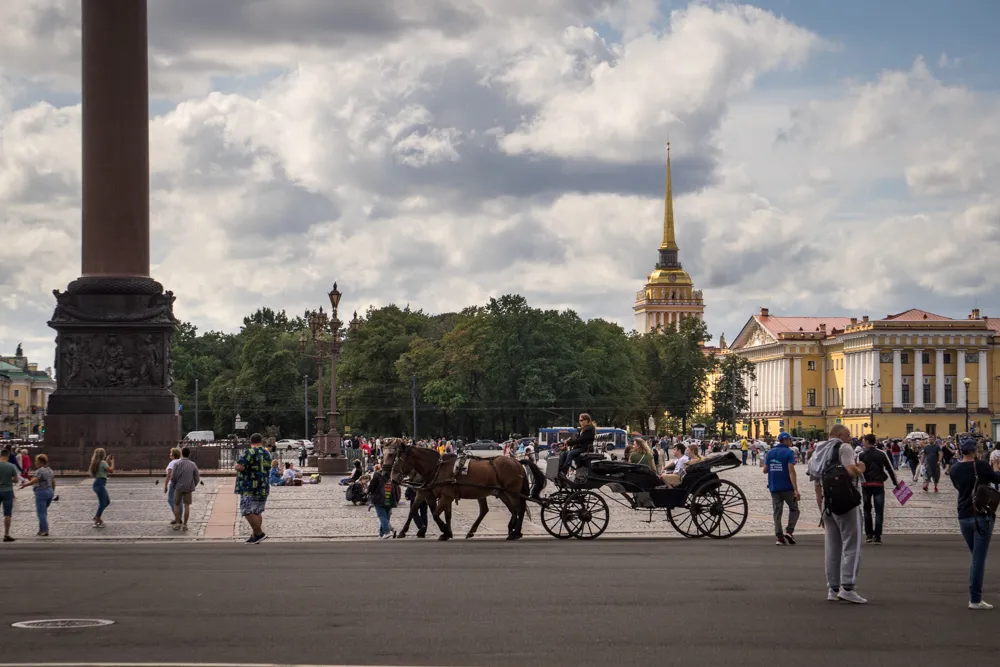
In front of the building of the main Admiralty, the Alexander Park was laid out. There is a lot of greenery, a beautiful fountain and a lot of tourists. And in my youth, we ran out to this garden for a morning run ... every single day. Times change. Now from the military school there are several chairs and memories. But let's not talk about sad things.
Перед зданием главного Адмиралтейства разбит Александровский парк. Там много зелени, красивый фонтан и много туристов. А во времена моей юности мы выбегали в этот сад на утреннюю пробежку...каждый божий день. Времена меняются. Теперь от военного училища остались несколько кафедр и воспоминания. Но не будем о грустном.

The Winter Palace and Atlanta on Millionnaya Street need no introduction. But they deserve to show their beauty. I tried to find different angles. This whole Atlantean company is very interesting. Each of them exactly repeats the shape of any other. When I am engaged in wood sculpture, I know what it means to make an exact copy. This is almost impossible in practice unless you have a 3D printer. There is an assumption (and there is historical evidence of this) that these figures were cast in the same mold. In the old days, there was a technology for casting sculptural forms from marble and granite. More precisely, using marble and granite chips. This is about the same as molds are cast from concrete now.
It is interesting from the point of view of technology, but when you look at these perfect sculptures, you think about the beauty and harmony of the creator.
Зимний дворец и Атланты на улице Миллионной не нуждаются в представлении. Но они заслуживают того, чтобы показать их красоту. Я постарался найти разные ракурсы. Вся эта компания атлантов весьма интересна. Каждый из них в точности повторяет форму любого другого. Занимаясь деревянной скульптурой, я знаю, что такое сделать точную копию. Это почти невозможно практически, если только у вас нет 3D принтера. Есть предположение (и тому существуют исторические свидетельства), что эти фигуры были отлиты по одной форме. В былые времена существовала технология отливки скульптурных форм из мрамора и гранита. Точне, с использованием мраморной и гранитной крошки. Это примерно также, как сейчас отливают формы из бетона.
Это интересно с точки зрения технологии, но когда смотришь на эти совершенные скульптуры, то думаешь о красоте и гармонии создателя.
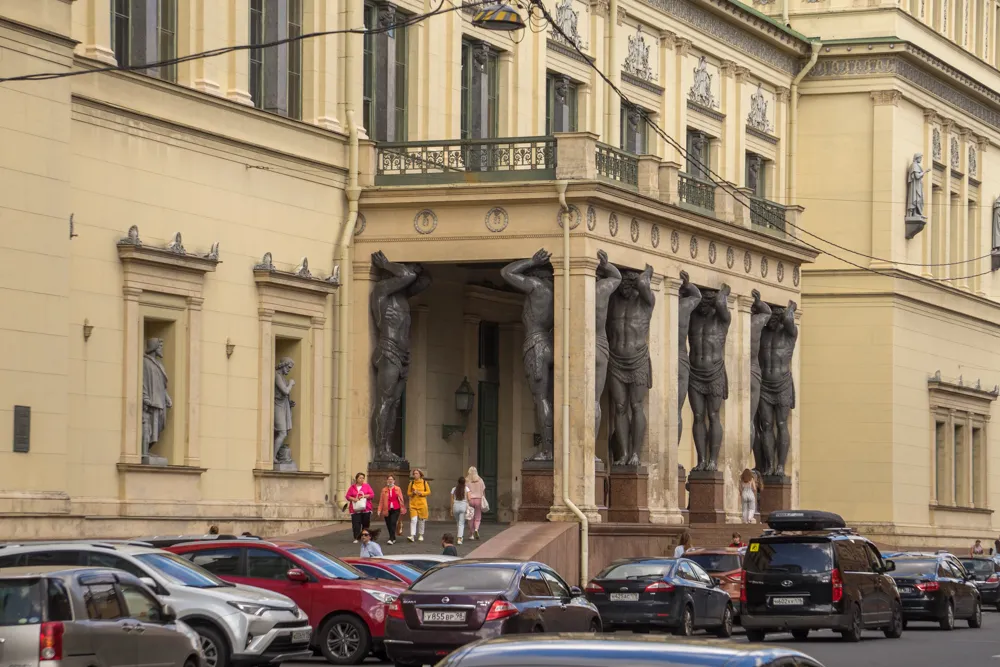
They don't seem too big from a distance ... until you get closer.
Издалека они не кажутся слишком большими...пока не подойдёшь ближе.
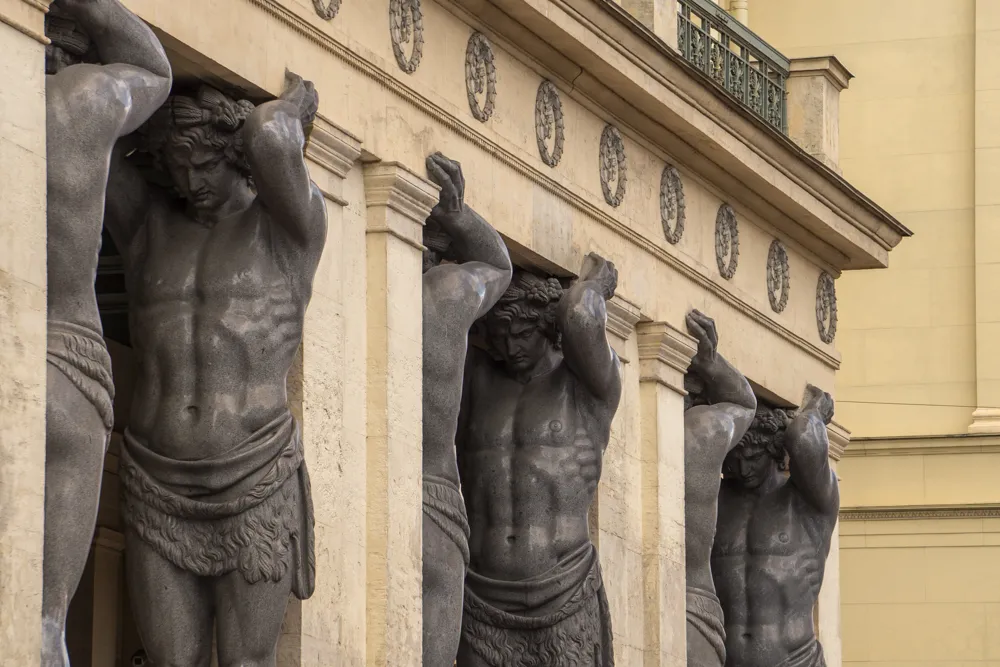
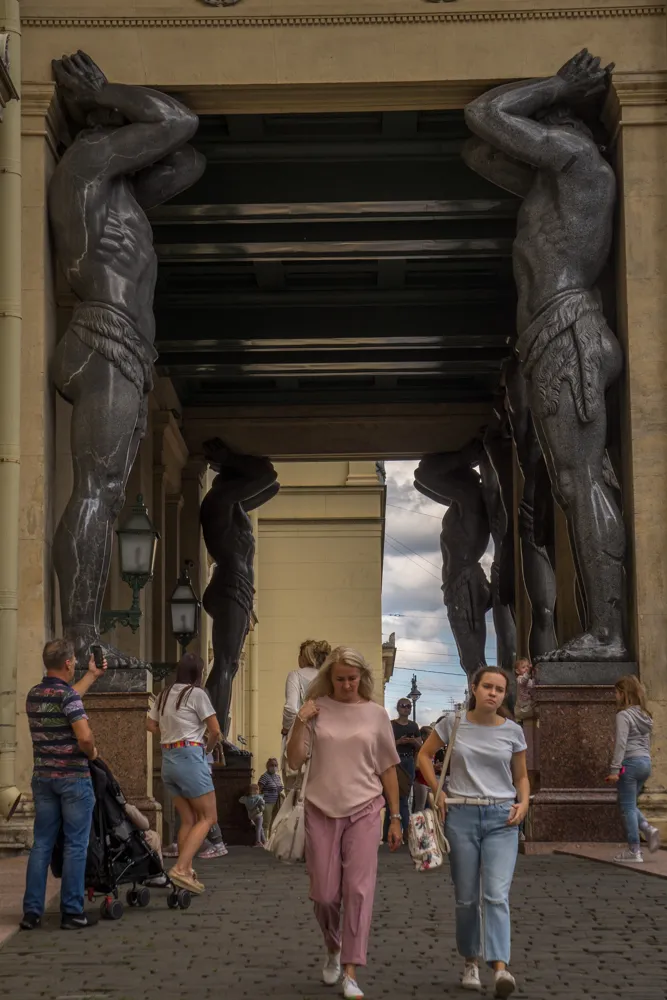
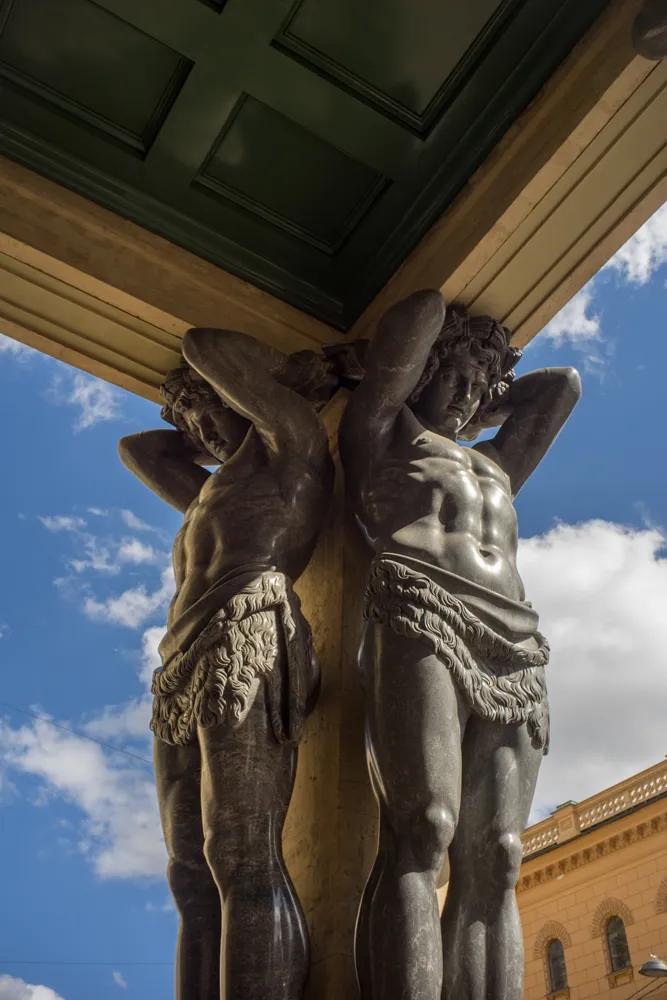

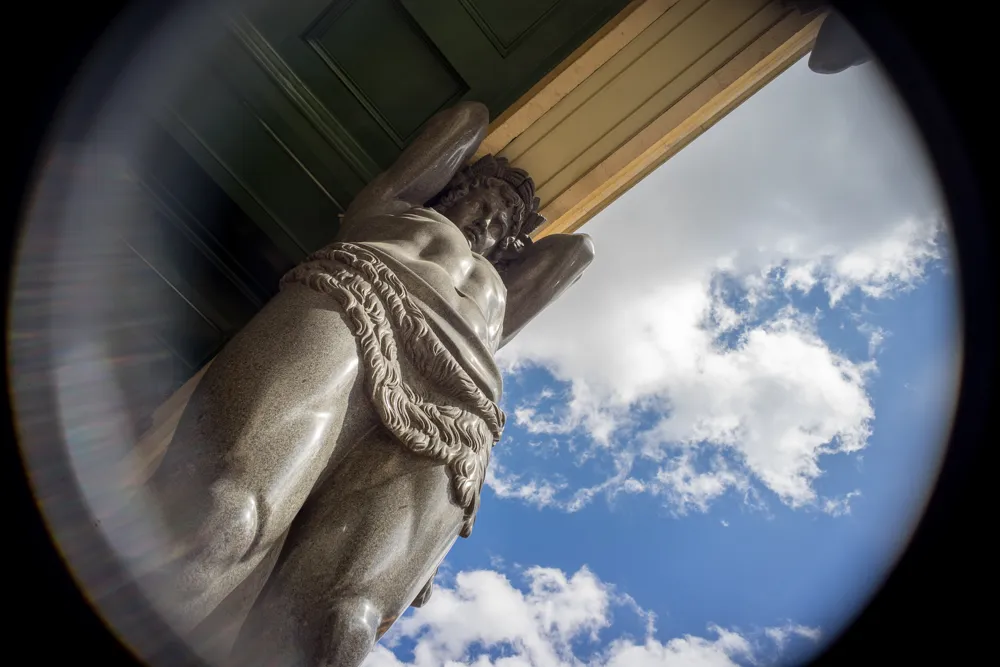
According to the myth, Atlas held the sky on his shoulders. I tried to find the angles in which the shoulders of these magnificent sculptures are in contact with the sky. I didn't even bother cropping some of the photos to a rectangular format. It seems to me that in this case, they could lose volume.
Согласно мифа, Атлант держал на своих плечах небо. Я постарался подобрать ракурсы, на которых плечи этих великолепных скульптур соприкасаются с небом. Я даже не стал обрезать некоторые фотографии до прямоугольного формата. Мне кажется, что в этом случае они могли потерять объём.

I think you shouldn't overload the post with other objects. This can weaken the impression of those that we were talking about. I think that making the next post will be a more correct decision. That day we were able to walk from Palace Square to Mikhailovsky Garden, and then we drove by car along Nevsky Prospect. But all this is really a separate story.
Я думаю, что не стоит перегружать пост другими объектами. Это может ослабить впечатление от тех, о которых у нас шла речь. Думаю, что сделать следующий пост будет более верным решением. В тот день мы смогли пройти с Дворцовой площади до Михайловского сада, а затем на машине проехались но Невскому проспекту. Но всё это действительно отдельная история.

| ▽ | ▽ |
|---|---|
| Camera | Sony A7М2 |
| Lens | Sony 55-210; ОKS 1-22-1 |
| Location | Russia |
| Post-production | in LR |
Manual processing in Lightroom
From Russia with Love


